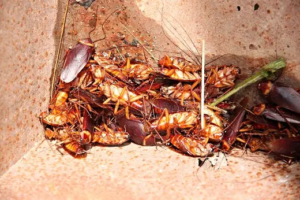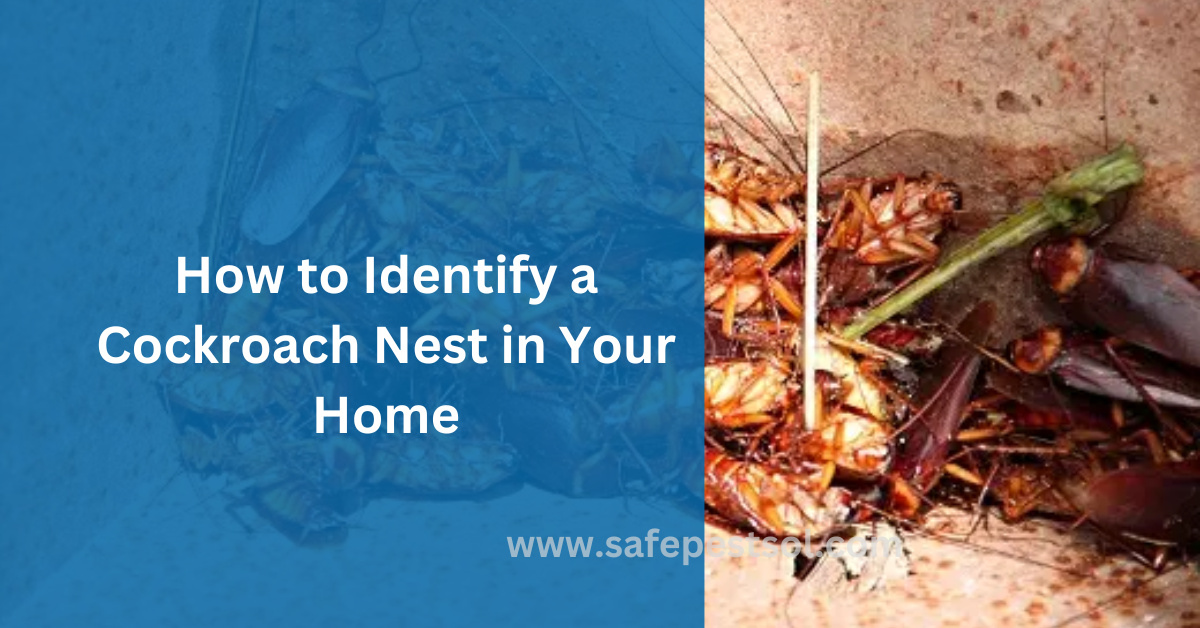How to Identify a Cockroach Nest in Your Home
Regarding what pests are usually found in homes, cockroaches can easily rank at the top. If you want to know the maximum level of infestation, cockroach nest inside your house is the latest level. But to avoid these circumstances, noticing these nests in your home.
before any infestation happens is the best way. So, where can you find roach nests in your house, how do you deal with them, and what do you do if you spot them? The answer to these questions is in this blog.

How Cockroach Nest Looks Like
| Feature | Description |
| Color | Brown to black, often blending with surroundings, especially in dark areas. |
| Shape | Clusters of small eggs, debris, and sometimes dead roaches. |
| Size | Typically small, around 1 to 2 inches, but can vary based on species. |
| Texture | Sticky or greasy to the touch due to the cockroach’s natural oils. |
| Smell | A strong, musty, or pungent odor is often a telltale sign of a cockroach nest nearby. |
Cockroach nests are typically hidden from view in small dimensions and inaccessible areas. They appear to be an unorganized mix of eggs, trash, and dead cockroaches. The first indicator of their presence would be a smell because the nests could have a strong, musty smell when the infestation has been long-standing.
Where Cockroach Nest Mostly Exists in Your Home
The cockroaches are nocturnal animals that prefer dark, secluded sites where they can easily attain food, water, or shelter. Quite often, their nesting places are areas you rarely visit, hence making them hard to find immediately. Below are the common areas where cockroaches usually hide their nests:
- Cockroaches’ nesting places are behind the corners of walls, baseboards, and inner sections of cabinets. These places rarely get attention but are best for cockroaches to live in.
- The most common areas of cockroach infestation are refrigerators, stoves, microwaves, and dishwashers, simply because these appliances provide access to water and food.
- Kitchens and bathrooms are among the best places for cockroaches to nest because they may have a source of water. Small leaks can easily attract roaches and give them a wonderful place to nest.
- Trash and food waste are also cockroach attractants because they are near bins or compost piles, which is one of their favorite nesting places. So, if these are close to entry points, it would be easiest for roaches to infest your home.
- Besides, moist areas like leaky pipes and floor drains are attracted to cockroaches in their habitat since they are useful hosts to a given environment.
What to Do if You Find a Cockroach Nest in Your House
This is very observable proof of having an infestation at home if you have already found a roach nest inside your home. Now, before the problem gets worse, you have to take action. Here’s what you have to do when you have already found a roach nest:
1. Vacuum the Nest
If the nest is open and accessible, vacuum them first. This removes dead roaches as well as their eggs and debris. Scrub everything right down, even the cracks and corners where roaches tend to hide. Be sure to throw away the vacuum bag or clean out the vacuum canister promptly, which may become a reason for re-infestation.
2. Use Traps
Once you have vacuumed the area, place some adhesive traps or baiting stations around the location of the nest where there is a chance that roaches may hide themselves. By doing this, you will have an idea of how bad the infestation is and will catch whatever is left of the roaches. At last, it will catch all the remaining roaches and will lower the roach population.
3. Clean Thoroughly
You can employ a cleaning solution to clean surfaces in the nesting area. Droppings by cockroaches could be one of the bacteria distributors. To clean well, you pay major attention to some areas, including inside cabinets, under sinks, and near garbage disposal areas.
4. Seal Entry Points
Cockroaches can easily find areas in the house through possible points of entry. After eliminating the nest, check your home to fill every crack or hole near walls, doors, windows, and pipes with caulk to prevent cockroaches from returning.
5. Consult a Professional
If it’s a terrible infestation, or you didn’t find time to eliminate the roaches, then the time has come to call for a pest control professional. They’ll come well-equipped with the tools and expertise to address the problem and provide long-term solutions.
Conclusion
You might be afraid of the roach hiding in your house, but knowing what to look for and what to do can save you from this bigger problem. Cockroaches love dark, damp places through which they can easily obtain food and water.
Therefore, keep vigilant and periodically check the moist and dark areas behind kitchen appliances, sinks, and storage. Then, if you find any nest, clean it, seal food, and set some traps. All these combined ways will keep cockroaches away.
FAQs
Q1: How do I know if I have a cockroach nest in my house?
A1: If you have found a bunch of dead roaches, cockroach droppings, or a solid awful smell, this means a cockroach nest somewhere exists in your home. The most common places to find them are cracked walls, under sinks, behind your appliances, and somewhere else where you don’t usually go.
Q2: Which is the most common place where cockroaches’ nests can be found?
A2: The most common cockroach hiding places include the back of kitchen appliances, sinks, inside cabinets, wet environments like floor drains, or spread across exposed water pipes, near food sources such as garbage cans, mulch piles, etc.
Q3: How do I stop cockroaches from coming back once I know where their nest is?
A3: In case a cockroach is sighted in the room, you have to cover all food in containers, sweep crumbs and spills, fix leaking faucets, and set sticky traps in the hope of finding new signs of cockroaches. The other closed points will include sealing holes and crevices along the walls and windows.
Call Professionals, Act Fast!
If you have found a cockroach nest in your home, the situation is alarming and can’t be handled with just natural remedies, you need more than that. Call us now and get our professional pest control services today!

